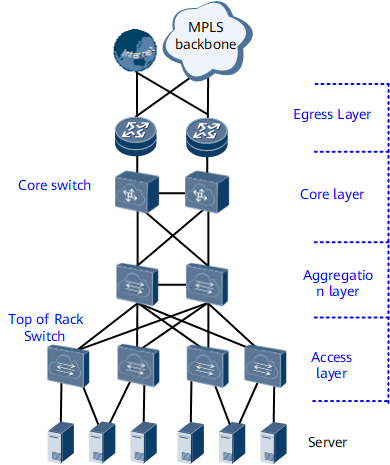Application of MCEs on a Data Center Network
Networking Description
Gateway layer: provides high-speed forwarding for inbound and outbound data of the data center.
Core layer: provides high-speed forwarding for data from the aggregation layer.
Aggregation layer: provides functions such as gateway redundancy for servers, load balancing, and firewall.
Access layer: provides high-density network interfaces for data center servers.
VPN services are becoming increasingly refined, and the demand for VPN service security is growing. Carriers must isolate different types of VPN services on data center networks to meet this demand, by configuring devices at the core layer to function as MCEs. The interfaces of an MCE can be bound to different VPNs based on service types, so that the MCE can create and maintain an independent routing and forwarding table for each VPN to completely isolate VPN services.
Feature Deployment
Different VPN instances are configured for different VPN services on core-layer devices.
Each interface of a core-layer device is bound to the corresponding VPN instance.
Gateway-layer devices that function as PEs are configured to connect to core-layer devices. The interfaces of gateway-layer devices connecting to core-layer devices are bound to the corresponding VPN instances.
A routing protocol is configured on devices at the gateway and core layers for these devices to communicate.
